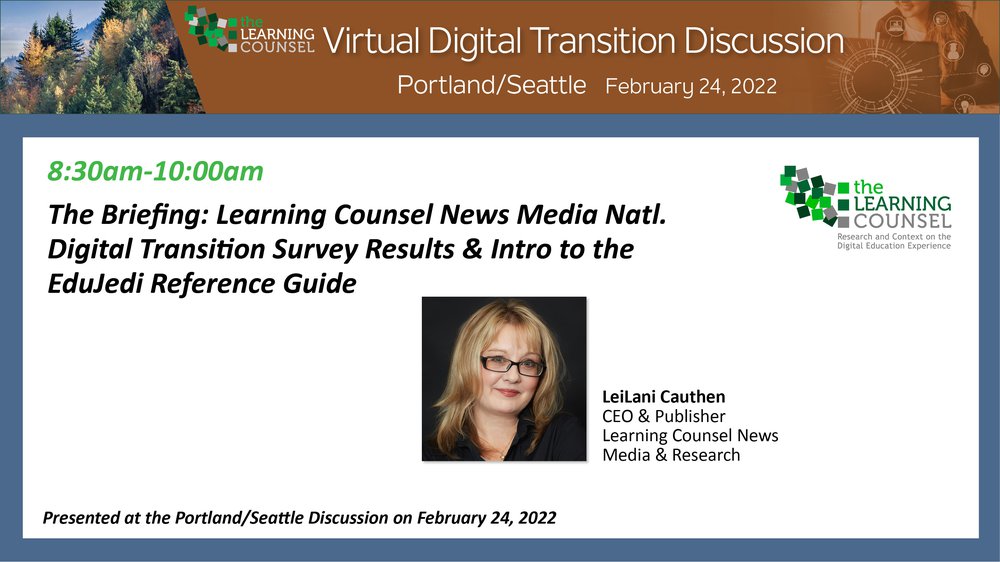In this virtual Digital Transition Discussion for Washington and Oregon, the discussion began with a briefing from LeiLani Cauthen, CEO and Publisher of the Learning Counsel. “Part of what we'll talk about today,” said Cauthen, “Is where are we going? What is happening with technology and why is everything still so weird? And what is the meaning of the destination of what EdTech is doing for all of us?”
“We conducted our national survey again this year and more than 21,000 educators responded. This year we split the survey, so there was a teacher side and an administrator side.
“So the pressures that were cited in the surveys were number one for administrators, time and space management, because you have everyone that learned that there could be some online learning. Some of it worked really well. Some of it had kids curled up in a ball. They didn't want to play at all, or learn at all, because they learn better on campus. And that was about a 50/50 split. And then you have attrition, you're losing kids. Those are the two biggies and they're echoed at the teacher level of the survey where student absences were really big and teacher time management was really big. So, you can look at this and say, okay, there's some sort of thread going on here.”
“We still are at 37 percent or 21 million students out of 56 million that have opted out of traditional public schooling,” said Cauthen. But those opt outers have gone to public online only like California's charters that are hung off the state level, charters themselves, private schools or home schools. And there's a small percentage in that 37 percent who are remote learners who refuse to come back to campus at all. A lot of school districts are talking about this to us. They're asking, how do we accommodate them? Do we stand up our own separate online school? Or what do we do? These kids don't want to be back on campus. So, those numbers are so shocking that most people, when they hear them, they don't really want to believe it.”
“Let's talk about where the spend is,” Cauthen continued. “We've got huge buckets of money right now in the education sector, more than we've ever seen. The last bucket, the ARPA, is still in play and most districts haven't even applied for it. It's the largest, loosest money we've ever seen. There's about $157 Billion all total left from the stimulus one, two, and then ARPA. ARPA was when the feds got their act together and said, ‘you know, we're not just going to give this to the states, it's going straight to the districts.’ And again, it's the largest we've ever seen. 2020 was the largest jump we've ever seen in spend. 2021 was a little Tamer but still represents a $2.2 Billion increase. The thing that's shocking to us and always has been is the comparison against the consumer markets. Straight to consumer digital is $28.5 Billion, twice the school market and growing at a 25% annual growth rate.”
Cauthen continued the briefing, including a lot of revealing data that is exclusive to the Learning Counsel’s annual digital survey, and unavailable anywhere else – unless you click on the briefing video. You’ll gain a better understanding of the true nature of the digital transition and find answers you can use in your own school or district.











